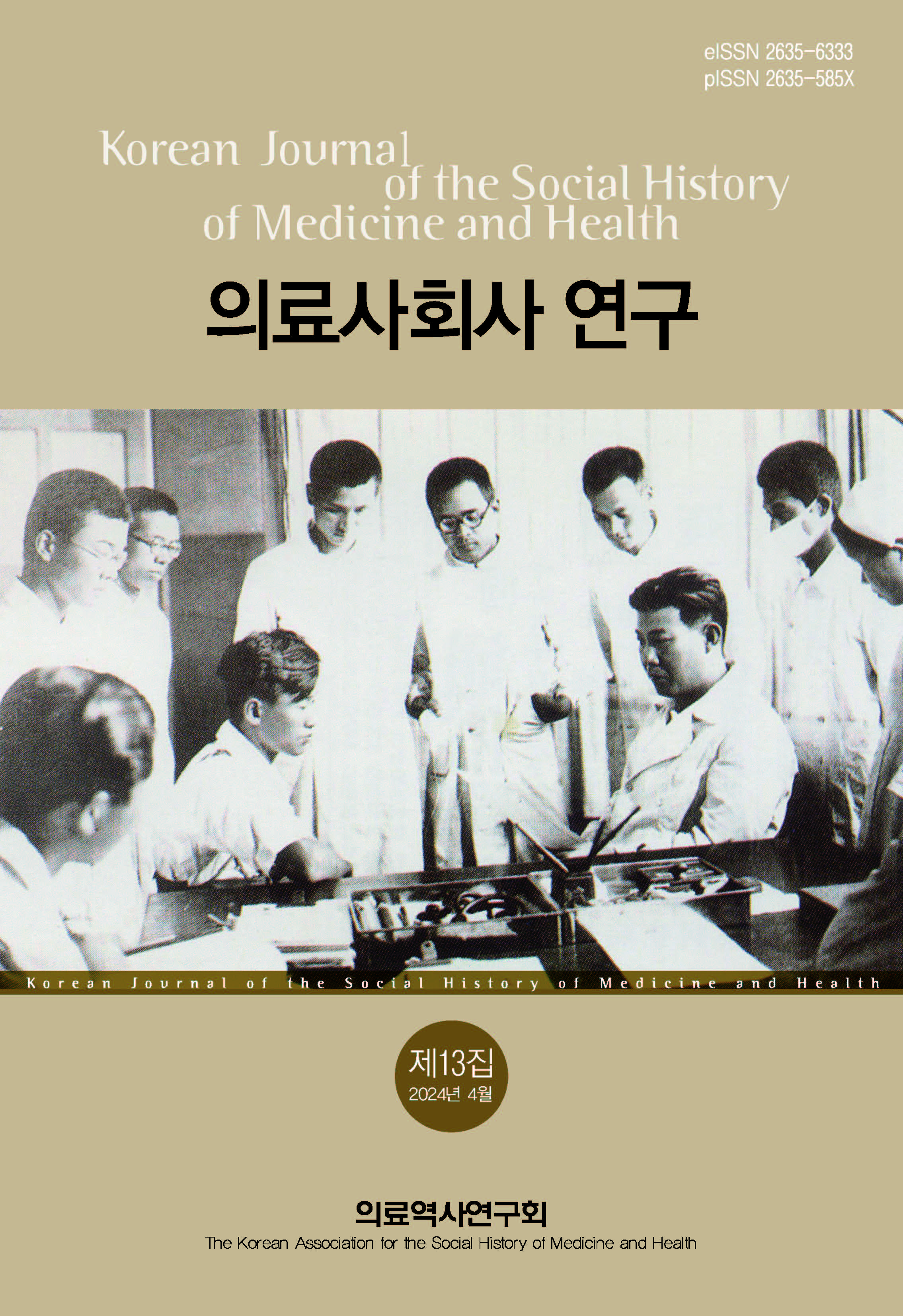여성 의학교육기관의 설립과 운영(1928-1945): 한국 ‘여성 의학’ 교육제도의 출발과 현대 의학교육의 모태(母胎) 형성
Establishment and Operation of Women’s Medical Education Institutions (1928-1945): The Beginning of Korea’s ‘Women’s Medicine’ Education System and the Formation of Modern Medical Education
- 의료역사연구회
- 의료사회사연구 [ISSN : 2635-6333]
- 제13집
-
2024.0455 - 82 (28 pages)
-
DOI : 10.32365/KASHM.2024.4.3
- 122

본 연구는 조선여자의학강습소와 경성여자의 학전문학교의 설립 및 운영에서 역할 하였던 인물들을 집중 조명하여 한국 여성 의학교육 기관의 설립과 운영 을 살펴보고자 하였다. 기존 연구경향은 여자 의학교육 이 조선여자의학강습소로 출발한 이후 경성여자의학전 문학교를 설치·운영하기까지 조선인 의사와 명망가의 활 동과 그 의미를 충분히 살피지 못하였다. 이에 본 연구는 여성 의학교육기관의 시작과 제도적 완성에 기여하였던 조선인 의사와 명망가의 지속적인 노력과 함께 여자 의 학교육을 담당하였던 강사 및 교수진의 변화를 검토하고 그 의미를 파악하고자 하였다. 이상의 검토를 통해 1928년 로제타 홀과 조선인 의사, 명망가가 함께 조선여자의학강습소를 설립하였고, 이후 여자의학전문학교 설립운동이 여성 의학교육의 이상을 조선인 사회에 환기시키며 1938년 경성여자의학전문학 교가 만들어질 수 있었음을 확인하였다. 아울러 조선여 자의학강습소에서 경성여자의학전문학교까지 여성 의 학교육을 담당한 조선인 의사들이 연속성을 가지며 여의 사를 양성하였고, 강사 및 교수진의 상당수가 해방 이후 국립 의과대학 교수로 진출하였음을 살폈다. 정리하면, 식민지시기 한국 여성 의학교육의 주요 동력은 조선인 의사와 명망가였고, 여성 의학교육기관에서 여의사를 양 성했던 교수진은 해방 이후 한국 현대 의학교육의 발전 에 기여하였다.
Focusing on individuals who played key roles in the Joseon Woman’s Medical Training Institute and Gyeongseong Woman’s Medical College, this study examines the establishment and operation of Korean women’s medical education institutions. Existing research has not sufficiently explored the women’s medical education-related activities and impacts of Korean doctors and prominent figures from the founding of the Joseon Woman’s Medical Training Institute to the establishment and operation of Gyeongseong Woman’s Medical College. To fill this gap in the literature, this study analyzes the changes in instructors and faculty responsible for women’s medical education, as well as the ongoing efforts of Korean doctors and influential figures who helped initiate and institutionalize women’s medical education in order to understand its significance. The investigation confirms that in 1928, Rosetta Sherwood Hall, along with Korean doctors and prominent individuals, established the Joseon Woman’s Medical Training Institute. The movement to establish a women’s medical school reignited Korean society’s interest in the ideals of women's medical education, leading to the establishment of Gyeongseong Woman’s Medical College in 1938. Additionally, Korean doctors overseeing women’s medical education from the Joseon Woman’s Medical Training Institute and Gyeongseong Woman’s Medical College committed to continually training female doctors. Following liberation in 1945, many of these instructors and faculty members became professors at National Medical Schools. Ultimately, the activities of Korean doctors and prominent individuals catalyzed Korean women's medical education during the colonial period. After liberation, these individuals contributed to the development of modern Korean medical education.
(0)
(0)